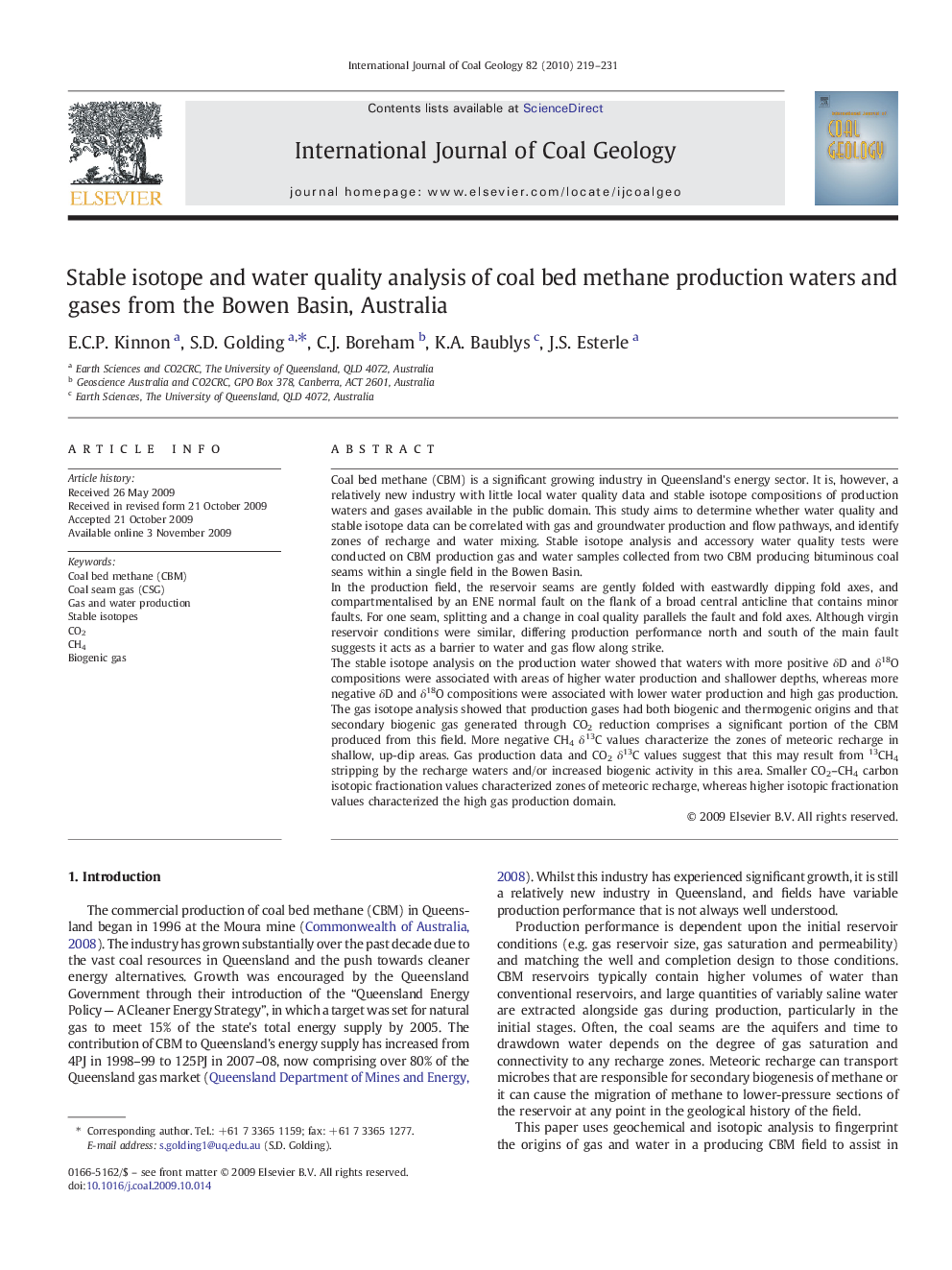| Article ID | Journal | Published Year | Pages | File Type |
|---|---|---|---|---|
| 1753867 | International Journal of Coal Geology | 2010 | 13 Pages |
Coal bed methane (CBM) is a significant growing industry in Queensland's energy sector. It is, however, a relatively new industry with little local water quality data and stable isotope compositions of production waters and gases available in the public domain. This study aims to determine whether water quality and stable isotope data can be correlated with gas and groundwater production and flow pathways, and identify zones of recharge and water mixing. Stable isotope analysis and accessory water quality tests were conducted on CBM production gas and water samples collected from two CBM producing bituminous coal seams within a single field in the Bowen Basin.In the production field, the reservoir seams are gently folded with eastwardly dipping fold axes, and compartmentalised by an ENE normal fault on the flank of a broad central anticline that contains minor faults. For one seam, splitting and a change in coal quality parallels the fault and fold axes. Although virgin reservoir conditions were similar, differing production performance north and south of the main fault suggests it acts as a barrier to water and gas flow along strike.The stable isotope analysis on the production water showed that waters with more positive δD and δ18O compositions were associated with areas of higher water production and shallower depths, whereas more negative δD and δ18O compositions were associated with lower water production and high gas production. The gas isotope analysis showed that production gases had both biogenic and thermogenic origins and that secondary biogenic gas generated through CO2 reduction comprises a significant portion of the CBM produced from this field. More negative CH4δ13C values characterize the zones of meteoric recharge in shallow, up-dip areas. Gas production data and CO2δ13C values suggest that this may result from 13CH4 stripping by the recharge waters and/or increased biogenic activity in this area. Smaller CO2–CH4 carbon isotopic fractionation values characterized zones of meteoric recharge, whereas higher isotopic fractionation values characterized the high gas production domain.
